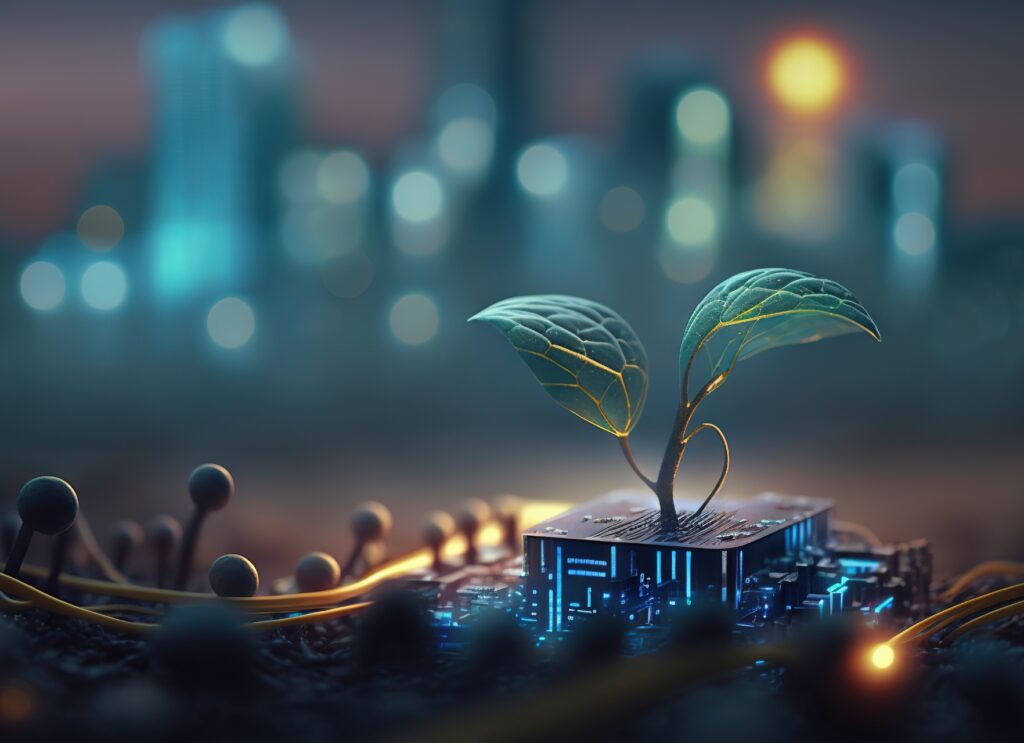Sustainability in Data Centers: A must in the Age of AI
In the age of AI, sustainability is becoming increasingly important for data centers. Despite the enormous energy consumption of AI chips, operators must assume ecological responsibility. Now more than ever.
Nvidia’s rapid development cannot be overlooked. The media is full of reports about the technology company’s phenomenal growth, driven by the high demand for its powerful AI chips. Nvidia’s graphics cards (GPUs) are the backbone of many AI applications and have recently made it the third most valuable company in the world.
For operators of data centers, which are the digital backbone for AI and today’s economy, this is an exciting time. But let’s not be fooled: AI chips come at a high environmental cost, as they consume enormous amounts of energy and water.
It may seem that sustainability concerns are taking a back seat to the AI boom. But the opposite is true. For our industry, sustainable business practices are more important than ever and will only become more urgent in the coming years.
The environmental Costs of Data Centers
The figures speak for themselves: in the USA alone, the energy consumption of data centers could reach 35 gigawatts by 2030 – enough to power around 26 million households. Globally, AI servers could consume as much energy as Argentina, the Netherlands or Sweden by 2027.
As an industry, we must be under no illusions about the environmental costs of meeting this unprecedented demand. We need to focus all the more on sustainability – and data center operators who are not yet on board should urgently embark on the sustainable path as well.
History of Sustainability in Data Centers
The data center industry is no newcomer to sustainability. We have long had metrics for tracking energy and water consumption. Power Usage Effectiveness (PUE), which measures the energy consumption of a data center, was introduced in 2006. Water Usage Effectiveness (WUE) followed in 2011. These metrics encourage data centers to use resources more efficiently and at the same time offer the opportunity to save costs. Our own PUE value, for example, is 1.08, just above the ideal value of 1.0 – which means that we use almost all of our energy directly for our IT equipment and are therefore highly efficient in our use of this valuable resource.
However, reducing energy and water consumption are only two ways to achieve more sustainable data centers. In addition to operational processes, building with lower CO2 emissions can make the biggest difference – at least in the case of new facilities or upcoming renovations. In this area, we are also seeing more financing linked to sustainable outcomes.
Encouragingly, data center operators are increasingly turning to renewable energy. In the USA, over 40 gigawatts of wind and solar energy are already in use. We ourselves already operate our data center, including air conditioning, lighting and connected office space, exclusively with green electricity.
Innovative technologies also play a major role. Our sustainability page gives you an insight into the technologies we currently use in order to operate as sustainably as possible.
Sustainability: a Win for Everyone
Of course, sustainable efforts not only have a positive impact on the environmental footprint of data center operators. At a time when sustainability awareness is (thankfully!) on the rise, a strong commitment to sustainability can also provide a huge competitive advantage and have a promising impact on corporate image.
At the same time, there are exciting opportunities for innovation as our industry seeks a more sustainable path. Because AI chips require so much energy to operate and cool, the technological breakthrough that reduces their energy consumption will have a multiplier effect. Even a reduction in energy consumption of just 10 percent would be a huge saving.
Ultimately, however, making data centers more sustainable is a win-win for everyone – the providers, the businesses they serve and the environment. Our industry may not have all the answers yet, but together we will surely find a better way.
Source: Forbes
You might also be interested in
Sustainability at centron
API Strategies for sustainable Success
Synaxon Study: IT Service Costs Exceed 100 Euro Mark


